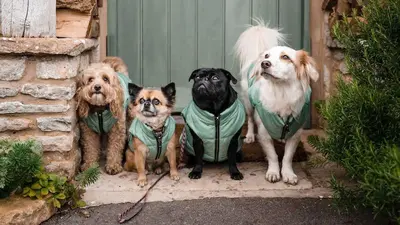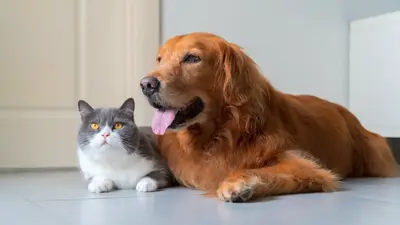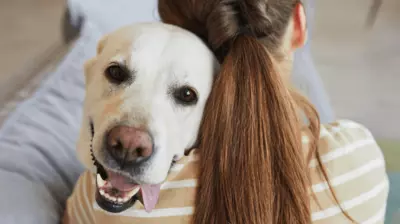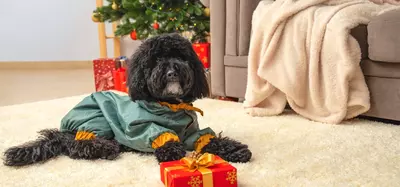Pet Loss Prevention Month: How to Keep Your Dog Safe
- 17 Jul 2024
- 8m read
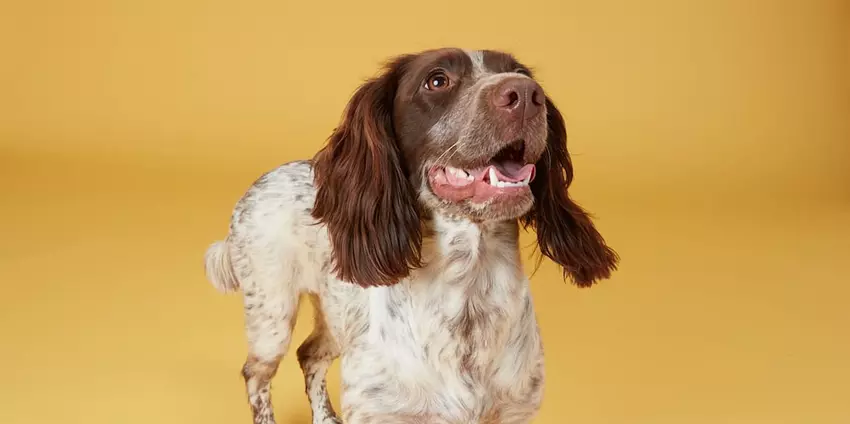
July is recognised worldwide as Pet Loss Prevention Month. It’s purpose is to remind pet parents just how important it is to keep their furry family members as safe as possible.
According to their data, Pet Log revealed that almost 5,000 dogs were reported missing between January 2023 and June 2024. They estimated that around 74% of these missing dogs were found. Pet theft, in particular, is on the rise and dogs are the primary targets.
Here are a few preventative measures that you can take to help ensure that your pup remains safe.
Microchipping
Microchipping is a simple and effective way to ensure your dog can be identified if they ever get lost. A tiny chip, no larger than a grain of rice, is implanted under your dog’s skin. This chip contains a unique identification number that is linked to your contact information in a national database.
If your dog goes missing, the microchip can be scanned at a vet practice, which will then notify the vet of your contact details, so that they can get in touch. This is why it’s incredibly important that you update your pet’s microchip details in the event that they change, such as when you move house or get a new phone number.
It is now a legal requirement in England and Wales to have your dog microchipped. For Scotland, Ireland and Northern Ireland, check their local government websites to see which rules apply. The cost to microchip your pet is usually around £15/€25.
For more advice on microchipping, visit GOV.UK, RSPCA and Citizens Information (IE).
Identity Tags
An identity tag on your dog’s collar is a quick and easy way for someone to contact you if they find your lost pooch. Ensure the tag includes your phone number, address and any important medical information.
We would recommend to avoid adding your dog’s name to their identity tag, potential thieves may use this to gain your dog's trust or to impersonate you as the rightful owner.
GPS Trackers
For the tech-savvy pet parent, GPS trackers are a game-changer. These nifty devices attach to your dog’s collar and let you monitor their whereabouts in real-time via an app on your phone. Whether your pup is an explorer who loves to roam or you simply want extra peace of mind, a GPS tracker ensures you always know where your pup is.
Make sure your home and garden are secure
A secure home and garden are essential for keeping your pup safe. Check for any gaps or weaknesses in your fences and gates that could become escape routes. Ensure fences are tall enough and gates latch securely.
Regularly inspect your garden for potential hazards or new escape opportunities, and keep your gates closed at all times. By creating a secure environment, you significantly reduce the risk of your dog wandering off and getting lost or an intruder entering your home.
Choose a good quality, reliable collar/harness and lead
Investing in a high-quality collar or harness and a sturdy lead is crucial for your dog's safety and comfort. The collar or harness should fit snugly but not too tightly, allowing you to slip two fingers between the collar and your dog's neck.
Opt for collars and harnesses made from durable, high-quality materials like nylon, leather, or neoprene. These materials are not only long-lasting but also comfortable for your dog to wear. Check for strong stitching and robust hardware like metal buckles and D-rings that can withstand daily wear and tear.
Additionally, look for safety features such as reflective strips or stitching, which enhance visibility during nighttime walks. A quick-release buckle can be a lifesaver in emergencies, allowing you to remove the collar or harness quickly if needed.
Regularly inspect the collar, harness, and lead for signs of wear and tear. Replace any gear that shows signs of fraying, rust, or damage to ensure your dog's safety at all times. A little investment in quality gear goes a long way in keeping your dog close and protected.
Master basic commands
Teaching your dog basic commands like “sit,” “stay,” and “come” can help you to manage your pup in various situations, preventing them from running into dangerous areas or getting into trouble. Start training in a quiet environment with minimal distractions, using positive reinforcement techniques such as treats and praise to encourage good behaviour.
The “sit” command can be particularly useful in keeping your dog calm and focused, especially in busy or potentially overwhelming environments. The “stay” command helps ensure your dog remains in place, which is crucial when you need them to wait patiently or stay out of harm’s way. The “come” command is perhaps the most important, as it allows you to call your dog back to you immediately, which can be a lifesaver if they are approaching a dangerous situation.
Practise these commands regularly and gradually introduce distractions to ensure your dog responds reliably in different settings. Consistency and patience are key.
Be vigilant
Whether at home, on walks, or in public spaces like parks, dog owners must stay alert to safeguard against thieves and prevent their pet from wandering off. Here’s how to stay vigilant in both scenarios:
Stay aware during socialisation - when socialising your dog in parks or public areas, be cautious of who interacts with your pooch and ensure they remain under your supervision to prevent both theft and accidental escape.
Keep your dog close - always keep your dog within sight during walks and avoid leaving them unattended, even momentarily, to reduce the risk of theft or accidental escape.
Avoid sharing personal info - be cautious about sharing details about your dog's breed, age, or habits with strangers, as this information can be used to target theft.
What to Do if Your Dog Has Gone Missing
We’re sorry if this has happened to you. As a team of dedicated pet parents and dog lovers, we know how upsetting this can be. If your dog goes missing, it's important to act quickly and efficiently to maximise the chances of finding them. Here are the steps you should take:
Start by searching the area where your dog was last seen. Call their name and listen for any response. Check hiding spots, bushes, and places they might seek shelter.
Contact your local council's dog warden, nearby veterinary practices, animal shelters, and rescue organisations. Provide them with a description of your dog, including breed, size, colour, and any distinctive markings. Ensure your contact details are clear and up-to-date.
Post a clear photo of your dog on social media platforms, local community groups, and lost pet websites. Include details such as where and when your dog was last seen, any identifiable features, and your contact information. Encourage people to share the post to increase visibility.
Create and distribute posters to put up in the local area, including parks, shops, vet clinics, and community notice boards.
Contact the microchip database to ensure your contact details are up-to-date. If your dog is found and taken to a vet or shelter, a microchip can facilitate their quick return to you.
Keep in regular contact with local animal rescue groups, dog walkers, and community groups who may hear or see information about your missing dog.
If you receive sightings of your dog, respond promptly and with caution. Bring treats and a lead to encourage your dog to come to you, but avoid chasing or startling them, as this could cause them to run further away.
What to Do if You Find a Lost Dog
If you find a lost dog, here are the steps you should take to help reunite them with their owner:
Approach the dog calmly and gently. Avoid sudden movements or loud noises that could frighten them.
Look for a collar with tags that include the dog’s name and owner’s contact information. If there are no tags, check for a microchip by taking the dog to a local veterinary clinic or animal shelter to scan for one.
If the dog is friendly and approachable, secure them with a leash or safely confine them in a secure area such as a backyard or garage to prevent them from wandering off again.
If the dog appears injured or distressed, handle them gently and consider seeking veterinary assistance if necessary. Provide water and a safe space while waiting for help.
Report the found dog to your local animal control, veterinary clinics, and animal shelters. Provide a detailed description and any identification information you found.
Post a clear photo and description of the found dog on social media platforms, local community groups, and lost pet websites. Include details about where and when the dog was found and your contact information. Sharing widely increases the chances of finding the owner.
Ensure that you follow the legal requirements which, in the uk, state that you must report finding a stray dog to the local council within 24 hours. They may ask you to take the dog to a designated kennel or arrange for them to collect it.
While your intention is to help, be cautious when handling an unknown dog. Some dogs may be scared or aggressive when lost, especially if injured or in unfamiliar surroundings.

